Best gravel shoes 2025: All the best options for every kind of gravel cycling
The best gravel shoes on the market, from racy options through to hike-a-bike workhorses for bikepackers
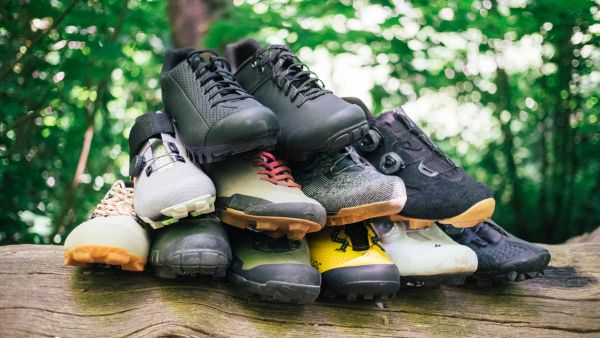
Gravel shoes are now a well-established segment; long gone are the days of putting up with standard mountain bike shoes. Now most brands have some gravel-specific footwear in their range focusing on either performance or adventure ends of the gravel spectrum.
The best gravel shoes take the majority of their design notes from the best road bike shoes but are overbuilt to some degree to take on the varying challenges that gravel riding offers. Given how diverse gravel riding has become, encompassing everything from what is basically road racing off-road to carrying your bike up a mountain, it's no surprise to see that diversity is now reflected in the available options on the market, almost mirroring the best gravel tyres for diversity.
I've done my best to collect, test, and collate a genuinely useful list of the very best of each category and at various price points too.
It's meant some uncomfortable rides at times over the past few months of testing, but also some truly sublime experiences. I've learned a fair bit about what works and what doesn't, not just for specific models but in general, so as well as specific product recommendations I'll try and share what I've picked up in general terms along the way too.
As for any burning questions you may have, your best bet is to head to the bottom where I've answered what I think is probably on your mind when you're looking to make a purchase.
Quick list
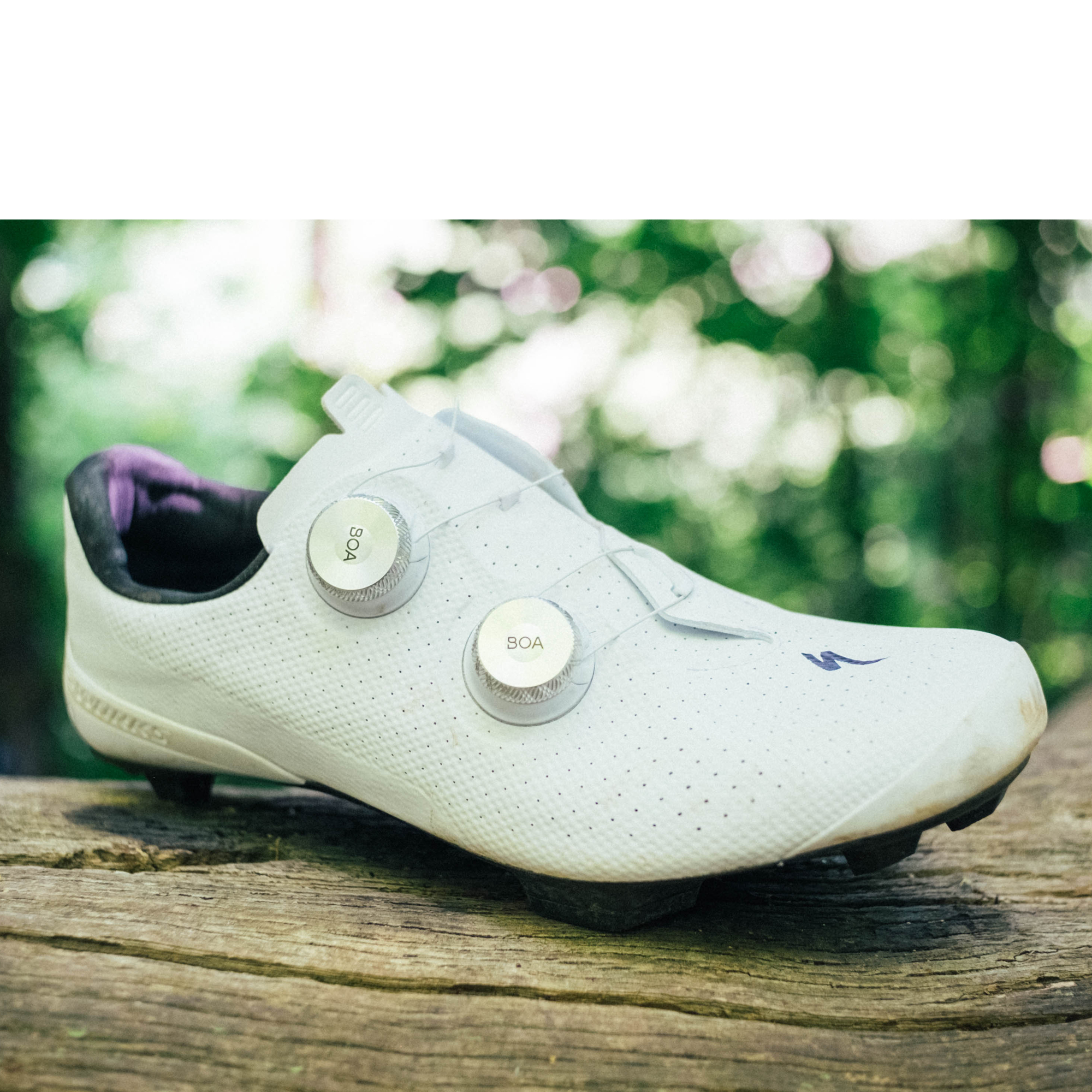
An unapologetically racy gravel shoe, the S-Works Recon is one of the most expensive on the list but is, rather surprisingly, also one of the most comfortable. Extremely lightweight thanks to a light carbon sole, the fit of these shoes is excellent, with an especially well-thought-out heel cup that keeps your foot positioned perfectly. The S-Works Recon are a favourite for those who want a close-fit, premium model for racing, or just riding hard in comfort.
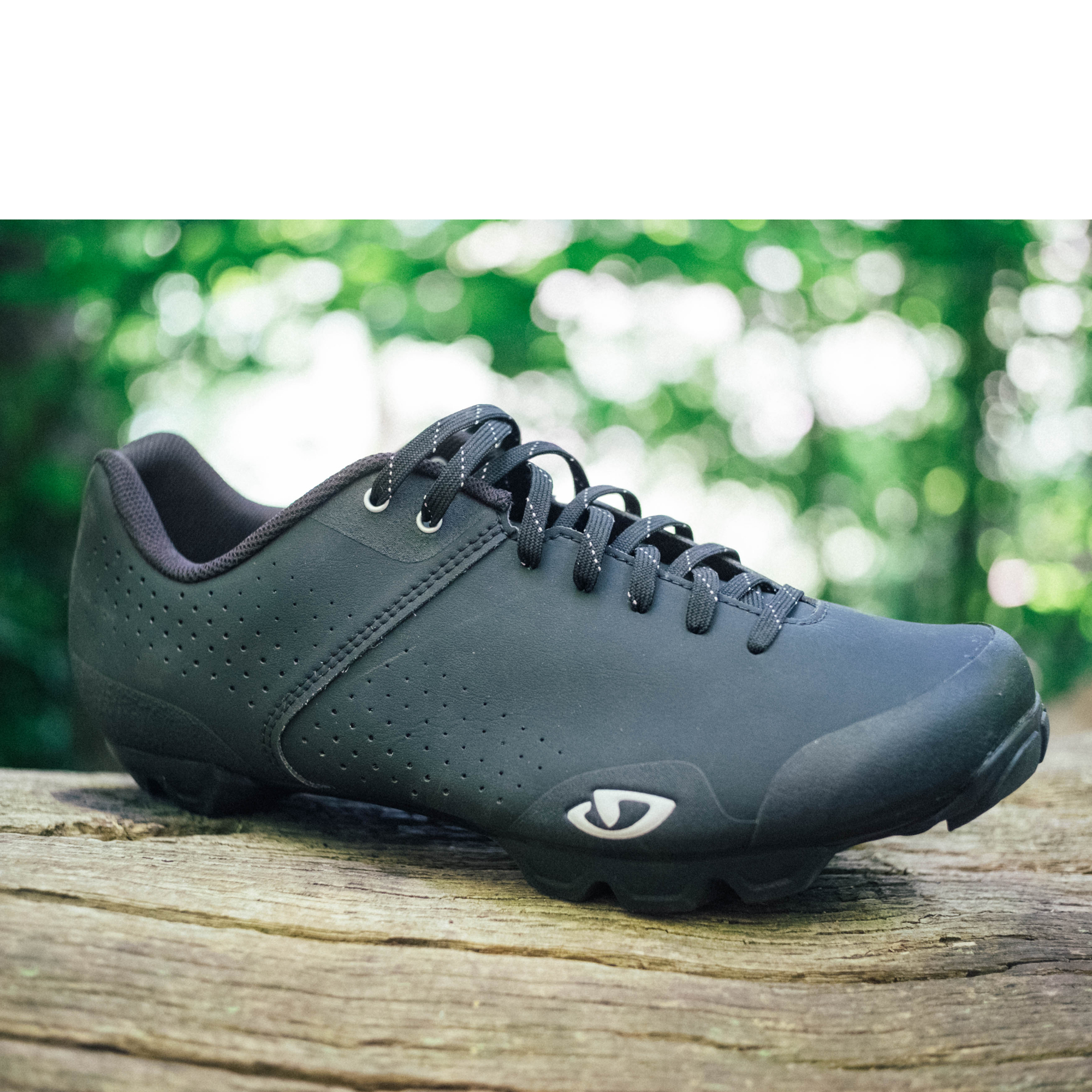
The one shoe that can do it all, the Giro Privateer offers excellent value for money and tops the list as the best value gravel shoe. There’s little not to like in these shoes: they’re comfy and warm enough to wear year-round, durable enough for a bit of hike-a-bike and supportive enough over rough terrain. They’re a narrow fit, but not overly aggressive. A great choice for most gravel riders.
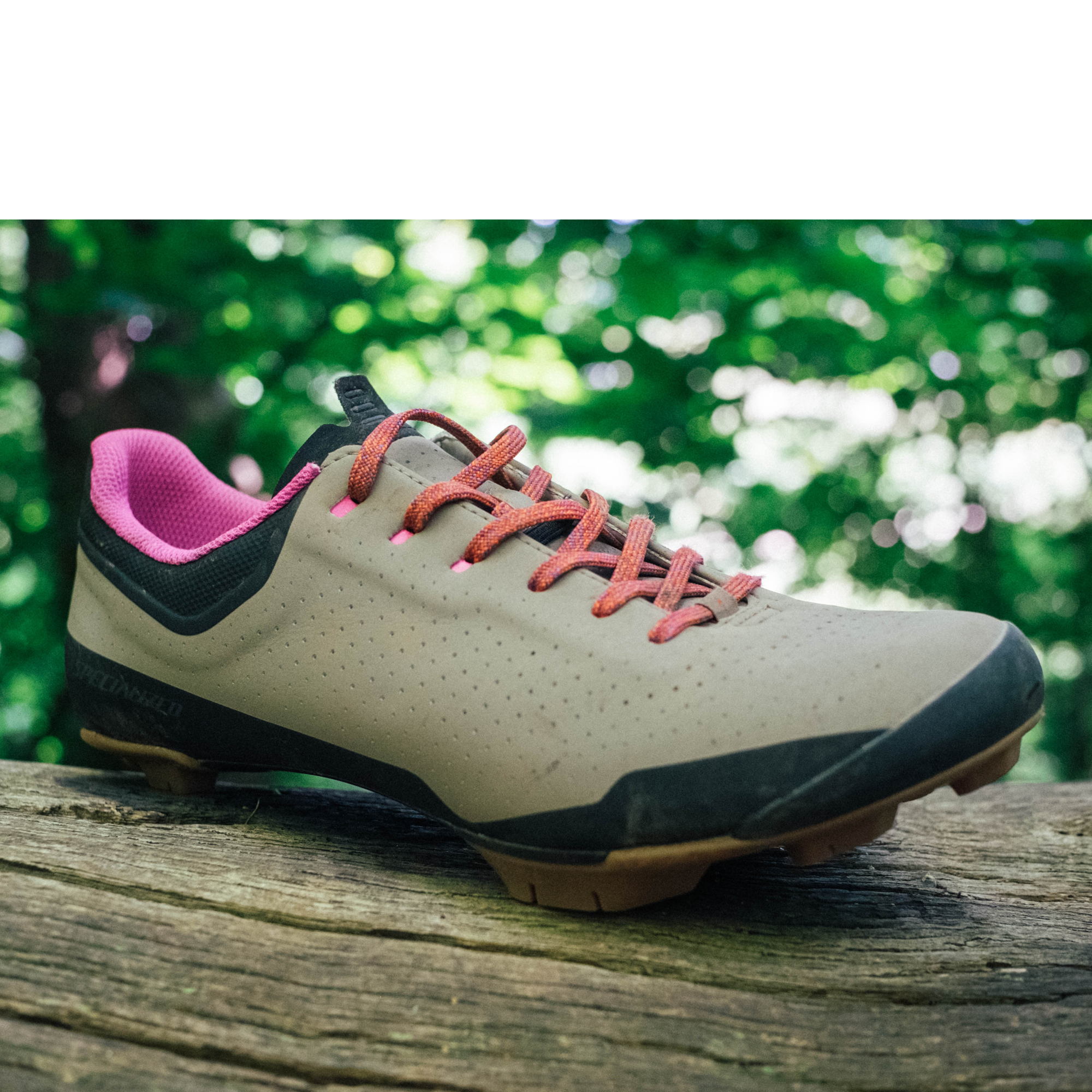
Bikepacking does from time to time tend to involve a bit of walking. With this in mind, the Specialized Recon ADV has a thinner carbon sole in front of the cleat plate, making the front more flexible for walking. It sounds like a gimmick, but it really does work, especially on loose terrain where stiff soles often make you feel like you're wearing crampons. The lace closure ensures day-long comfort while riding, too, and they are constructed very well so should stand up to the additional abuse that bikepacking throws up.
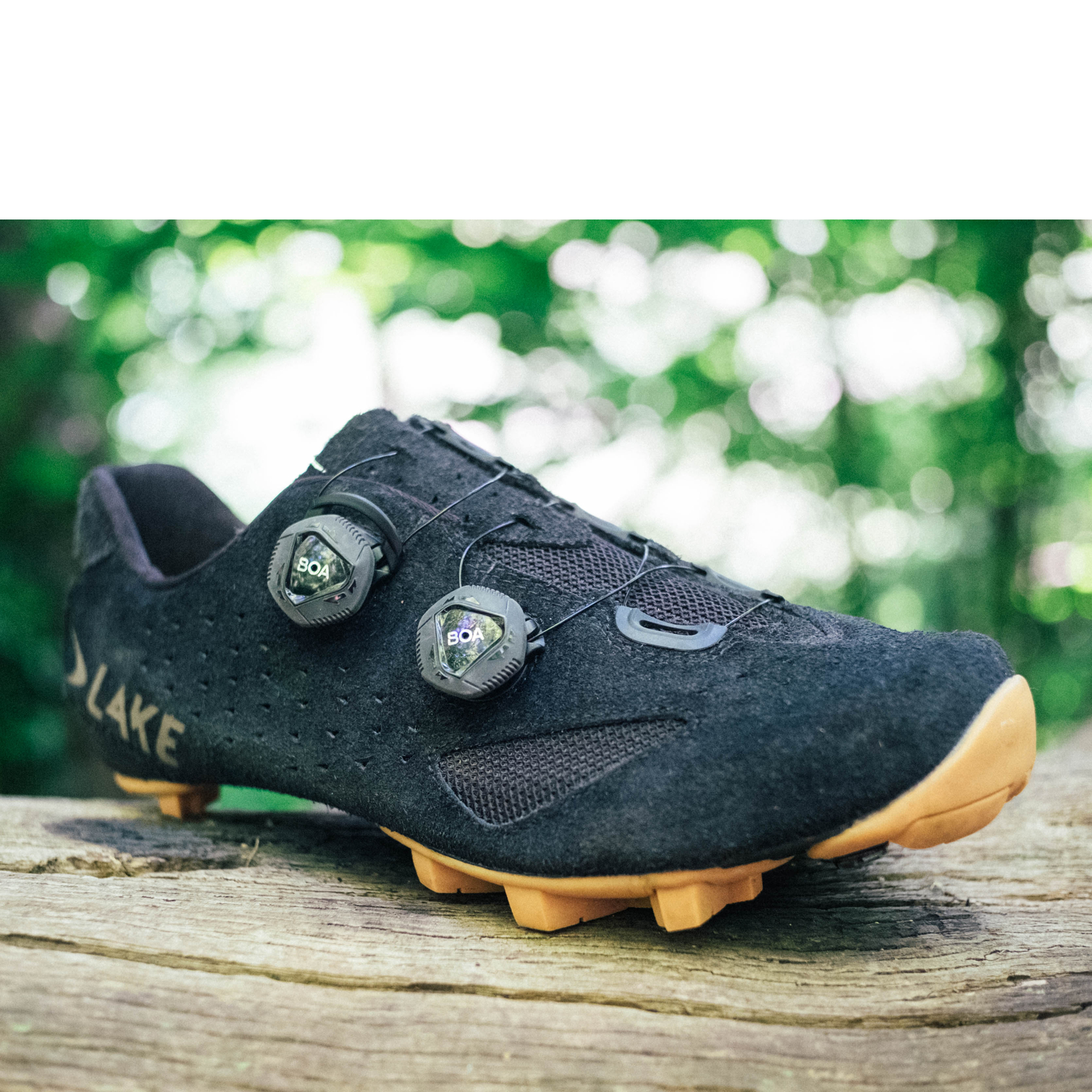
As we explain below, a wider shoe is better for foot comfort when riding gravel. That's particularly true if you already have wider feet. The Lake shoes are considerably wider than most shoes here to start with, they're available in a wide fit for even more room and the suede uppers will stretch over time to conform to your feet too.
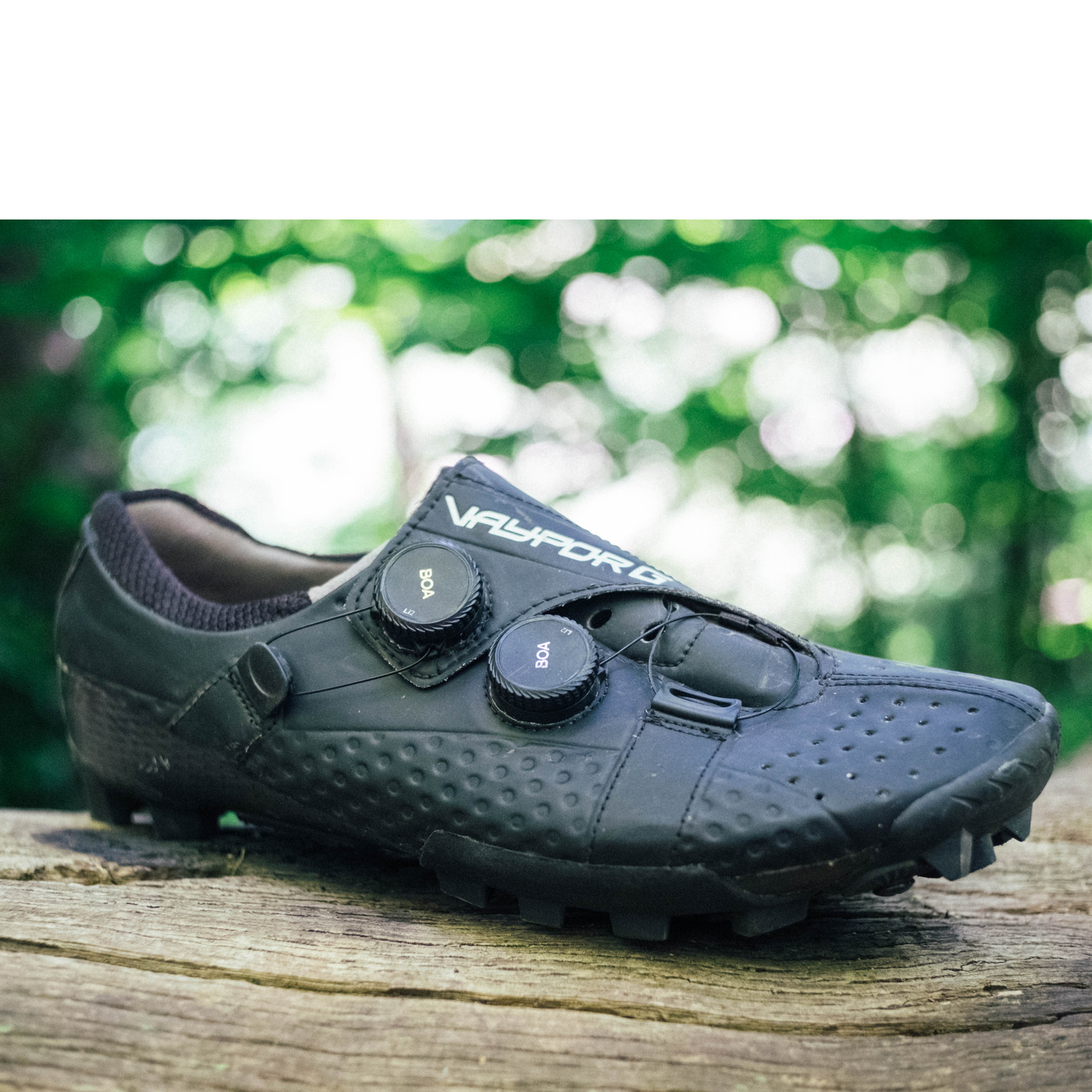
Wide fit shoes are great, but if you want a perfect fit then Bont's Vaypor G gravel shoes offer up a sole that is heat mouldable along its entire length. They are available in a wide variety of widths, have a roomy toe box, and to mould them to your feet you just whack them in the oven for a bit and the resin softens. If you don't get it perfect the first time you can repeat the process indefinitely too.
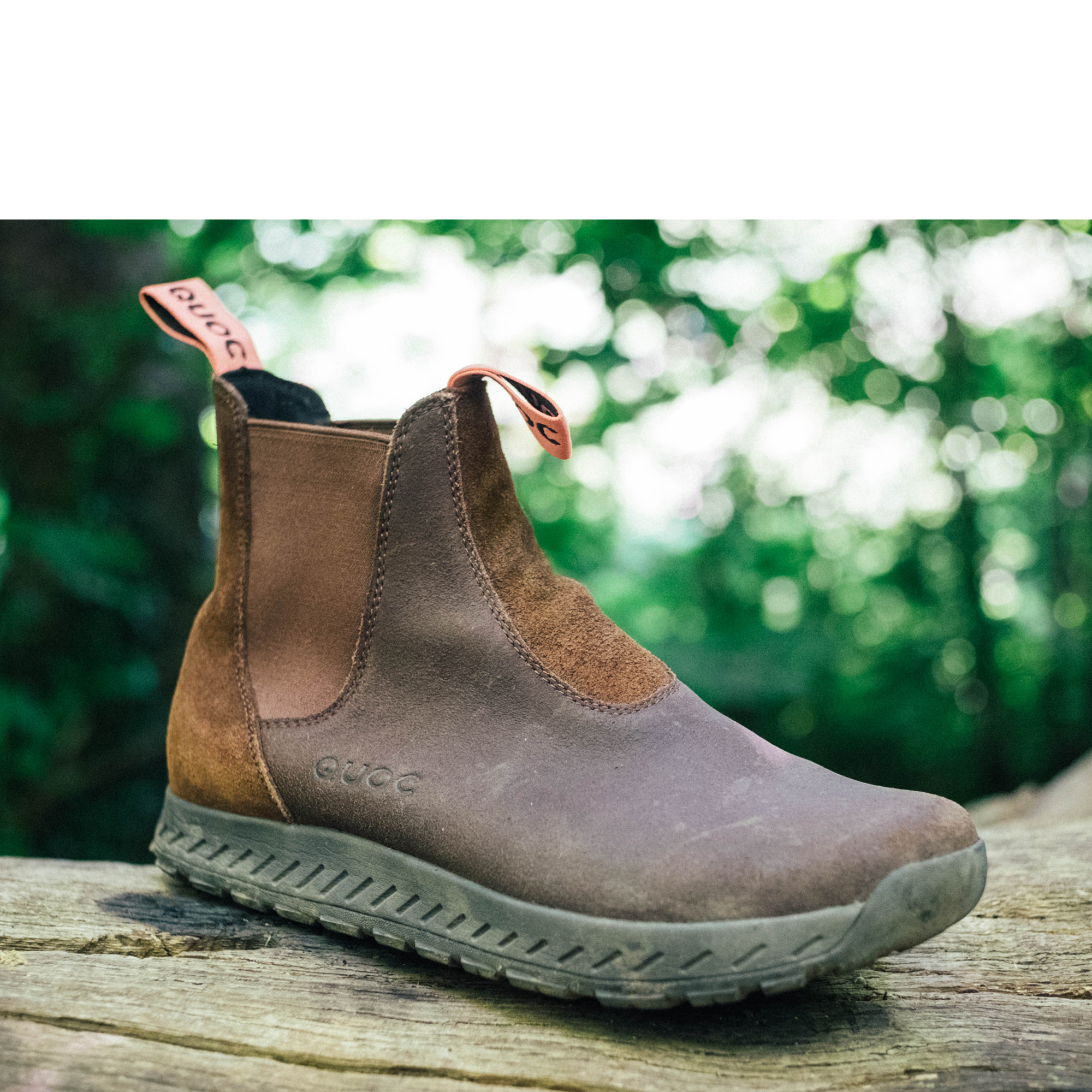
For a shoe that works from bike to office, you can’t ask for anything better than the Quoc Chelsea Boot. They’re quintessentially a Chelsea boot in design and feel, although are perhaps a little stiffer than you’d expect and a little less comfy to walk in, but are surprisingly effective on the bike. They’re not floppy, and have great heel retention, while also offering relatively good water-repelling qualities.
Recent updates
Last updated on 22nd of January 2025
This guide was last reviewed in January 2025, when all the gravel bike shoes below were still currently stocked models. Buy If and Don't By If bullet points were added for all the products to simplify buying advice. The format has also been adjusted to improve navigation on the page.
The best gravel shoes you can buy today
We regularly check our guides to make sure that we're bringing you the best products and adding new ones when these become available. We also review many new models and add them to our guides if they hit the mark in our tests.
Best overall
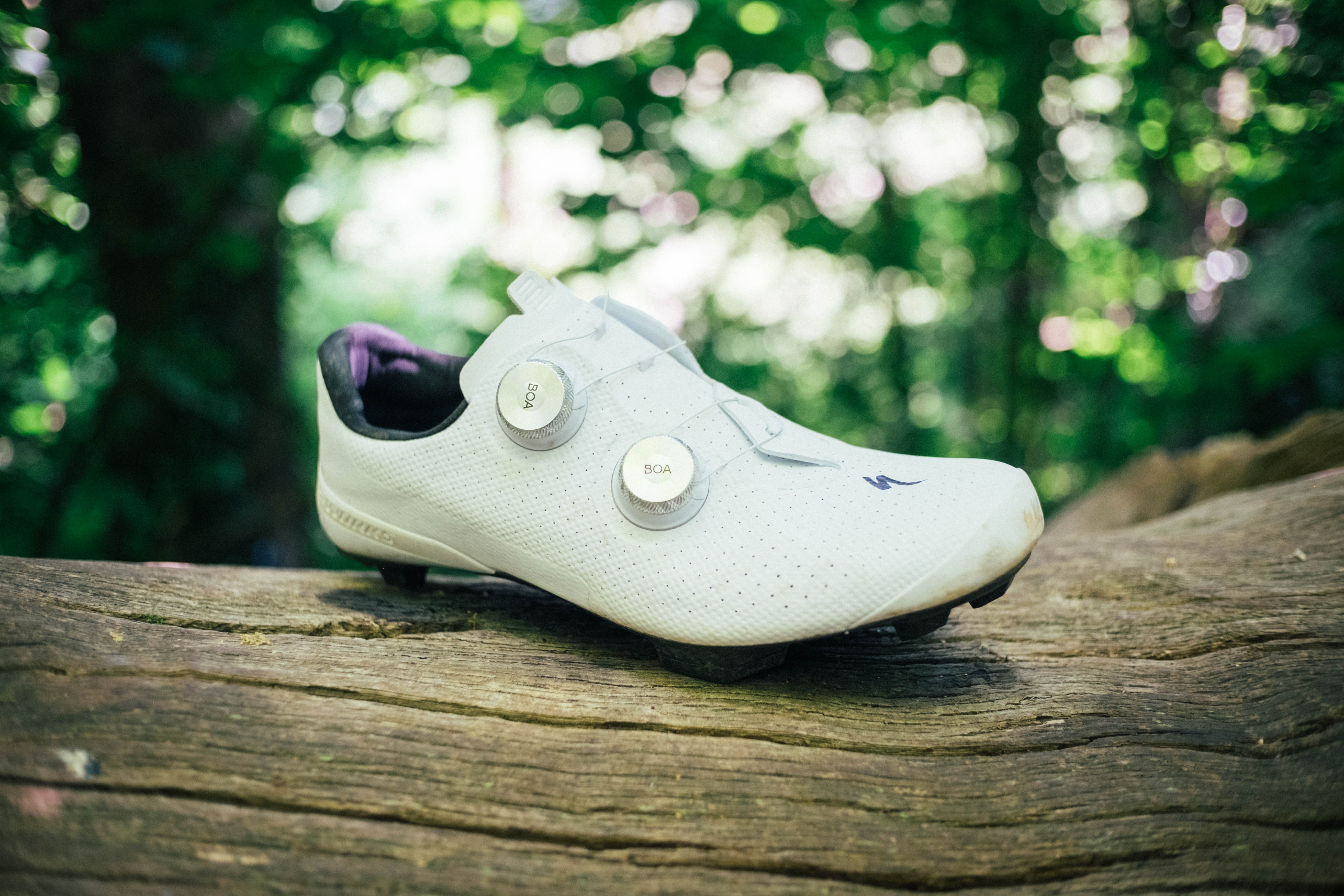
1. Specialized S-Works Recon
Specifications
Reasons to buy
Reasons to avoid
✅ You want a gravel race shoe: The S-Works Recons are stiff, light and designed for racing.
✅ You want foot comfort: Despite their race orientation, I found the Recons very comfortable.
❌ You're on a budget: The Recons are the most expensive shoes here.
❌ You do much hike-a-bike: The stiff soles make walking any distance awkward.
If the Giro Privateer is a reasonably priced generalist, the Specialized S-Works Recon exist at the other end of several spectrums. They are an out-and-out, unapologetically racy gravel shoe, but despite this, they are also one of the more comfortable options on the list. If you want a pair the main drawback is going to be the price, so let's be upfront: These are the most expensive shoes of the bunch, a full £60 more than the next most expensive, the Bont Vaypor G. What do you get for that high retail price, then?
The fit is truly sublime. The heel cup is tenacious, the forefoot wider than previous generations, and the dual Boa closure means you get a shoe that feels more of an extension of your body than any other I've tried. Heel cups on Specialized shoes, especially top-end options, are always good, but also made of very stiff material that doesn't always play nicely with ankles. Here the dropped outer ankle area keeps things comfortable when you're throwing the bike from side to side, or over rough ground.
They're also the lightest pair of shoes on test, thanks to a light carbon sole but primarily eschewing any real interior padding and being constructed from a rather stiff (and fortunately durable feeling), outer, with just a ridge of firm foam around the rim of the ankle to hold things in place. Don't mistake this for a lack of comfort though, the Recons were some of the most comfy on test.
These are a race shoe though, essentially a gravel copy of the S-Works Torch, and that distinction is more important off-road than it would be on the tarmac; I wouldn't want to walk off-road for extended periods in these any more than I'd want to walk for ages in road cleats. The outsole is essentially there to allow you to walk to and from your bike. If you want a race-facing shoe that you can actually walk in go for the Empire VR90, or the Vento Ferox carbon if you've got narrow feet.
Just a warning when purchasing: The old MTB shoes and these new gravel shoes are both named the Recon, so make sure you're getting the right ones.
Best value
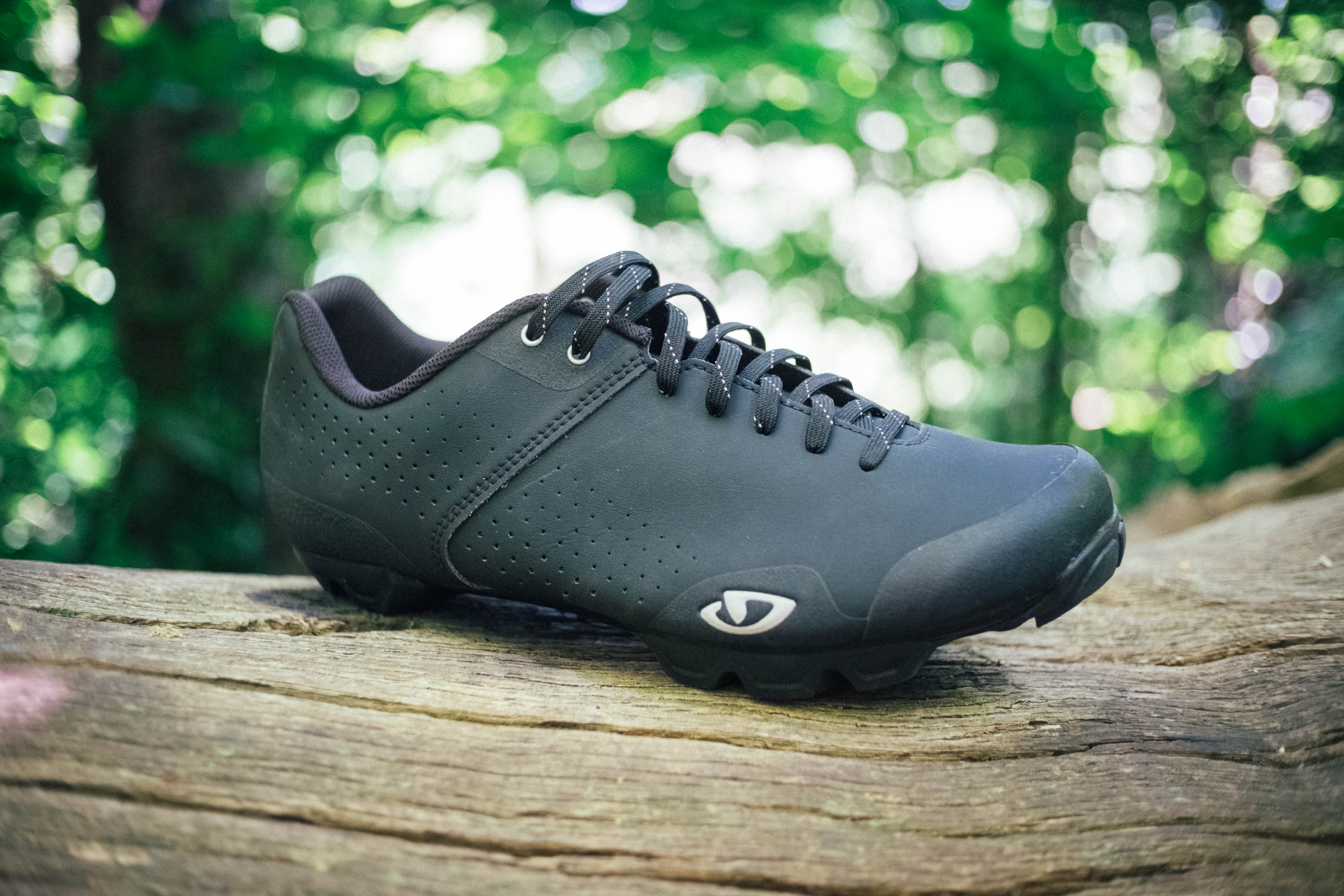
2. Giro Privateer
Specifications
Reasons to buy
Reasons to avoid
✅ You're looking for the best value: The Privateer is a lot of shoe for your money.
✅ You want a shoe that will serve for winter rides: Few perforations mean less water and mud ingress, so the Privateers are good for winter gravel rides.
❌ You're in between sizes: Giro doesn't offer half sizes, so the fit might not suit you.
❌ Your feet run hot: There's not the ventilation on offer for warm days that other shoes provide.
Yes, the more premium shoes below do offer better performance, but from the point of view of the generalist the Giro Privateer represents a very very good option at an affordable price.
The sole is composite, but unless you're regularly riding at maximum effort that's no real drawback, and it's great for extended hike-a-bike along with the grippy outsole. While they're not super racy I did race cross in a previous iteration of them and they were perfectly adequate; I don't think better shoes would really have moved me up from my mid-pack finishes.
The comfort factor from the laces is excellent, along with ample ankle padding that comes into play over rougher terrain and provides decent heel retention as a bonus. The extra padding and the mostly non-perforated nature of the outer does mean they get a bit hot in high summer, but the flip side is that I have been able to use these year-round, just by adding some of the best winter cycling socks. The lack of perforations means it's harder for water to get in on wet rides. The upside of them being at the cheaper end of the spectrum too is that if you do use them over winter and trash them you're less concerned; you can focus on the riding and not worry about your fancy summer slippers getting tatty.
In short, if you need one shoe to do it all then the Privateer is a perfect starting point if you're unsure which direction to take, and given that and the price that's why I think they're the best option for most people. Want the same features but more of a race-focused option, go for the Empire VR90.
The fit is narrow, but not compared to something like the Fizik Vento Ferox Carbon. If you really can't stand the idea of laces then the Giro Rincon offers similar things at a similar price, but in a package with a BOA dial and a Velcro strap, however I found the Velcro strap to be essentially pointless, and despite the more breathable exterior I'd opt for the Privateer given the choice.
Best for bikepacking
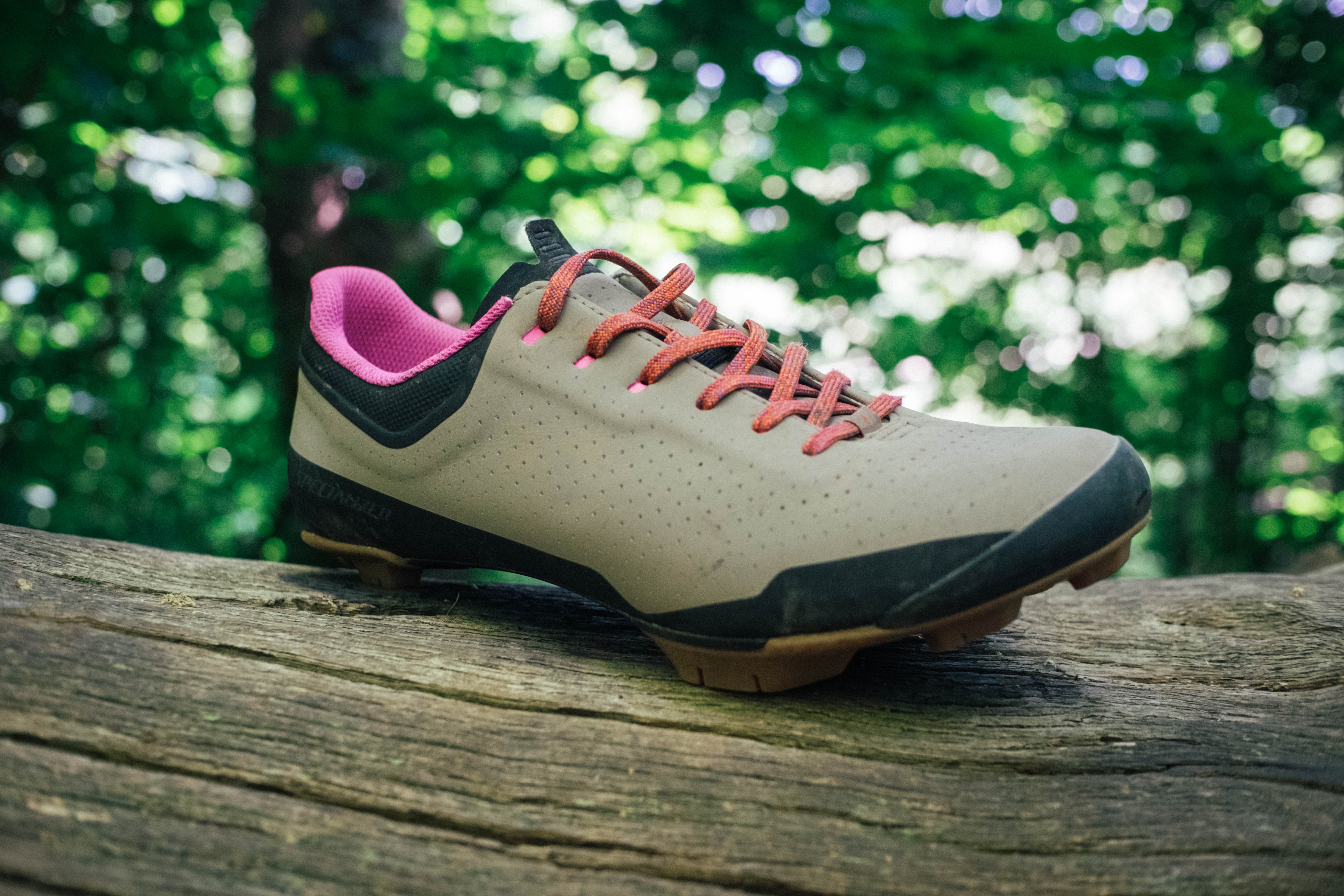
3. Specialized Recon ADV
Specifications
Reasons to buy
Reasons to avoid
✅ You walk in your gravel shoes: The sole plate has plenty of flex ahead of the cleats, making hike-a-bike easier.
✅ You like the adjustability of laces: The laces make it easy to fine-tune the fit for foot comfort.
❌ You frequently ride in the wet: The venting can quickly make for damp feet.
❌ You want extra grip: The Recon ADV's sole isn't as aggressive as some and can slip around when walking in muddy conditions.
Nominally the Recon ADV is Specialized's 'adventure shoe', sadly another victim of the great gravel vowel shortage. While the outsole isn't a huge amount more chunky than the S-Works Recon, the carbon sole itself is more flexible in front of the cleat plate, making them a great deal easier to walk in, especially over rough ground.
While they're never going to compete with an actual walking boot for off-road hiking, for the sort of hike-a-bike that goes on while bikepacking it's just enough to make them decent without sacrificing shoe stiffness, as the sole under and rear of the cleat plate is just as stiff as ever.
In my opinion, these sit alongside the Empire VR90 as a high-performance generalist with the offer of a lace closure. As with the Empires, you get that highly tunable fit, but here it falls alongside a more secure heel cup, utilising the same style of padded upper ridge as per the Recons, but more so. On the flip side, the sole isn't as grippy, and it cannot accept toe spikes, so definitely gravel only without any cyclocross.
There's very little to choose between these and the Empires. For summer use I'd take the Recon ADV, if I had a pair of the best winter cycling shoes to fall back on, but for all-around use, or riding in wet conditions I'd take the Giro option.
It may just be because the Empires have been around for years now and the Recons are new, but the Recon ADV are a more attractive shoe, though the wider spacing of the side panels across the upper foot does have the effect of making your foot look a little more chunky.
Best for wide feet
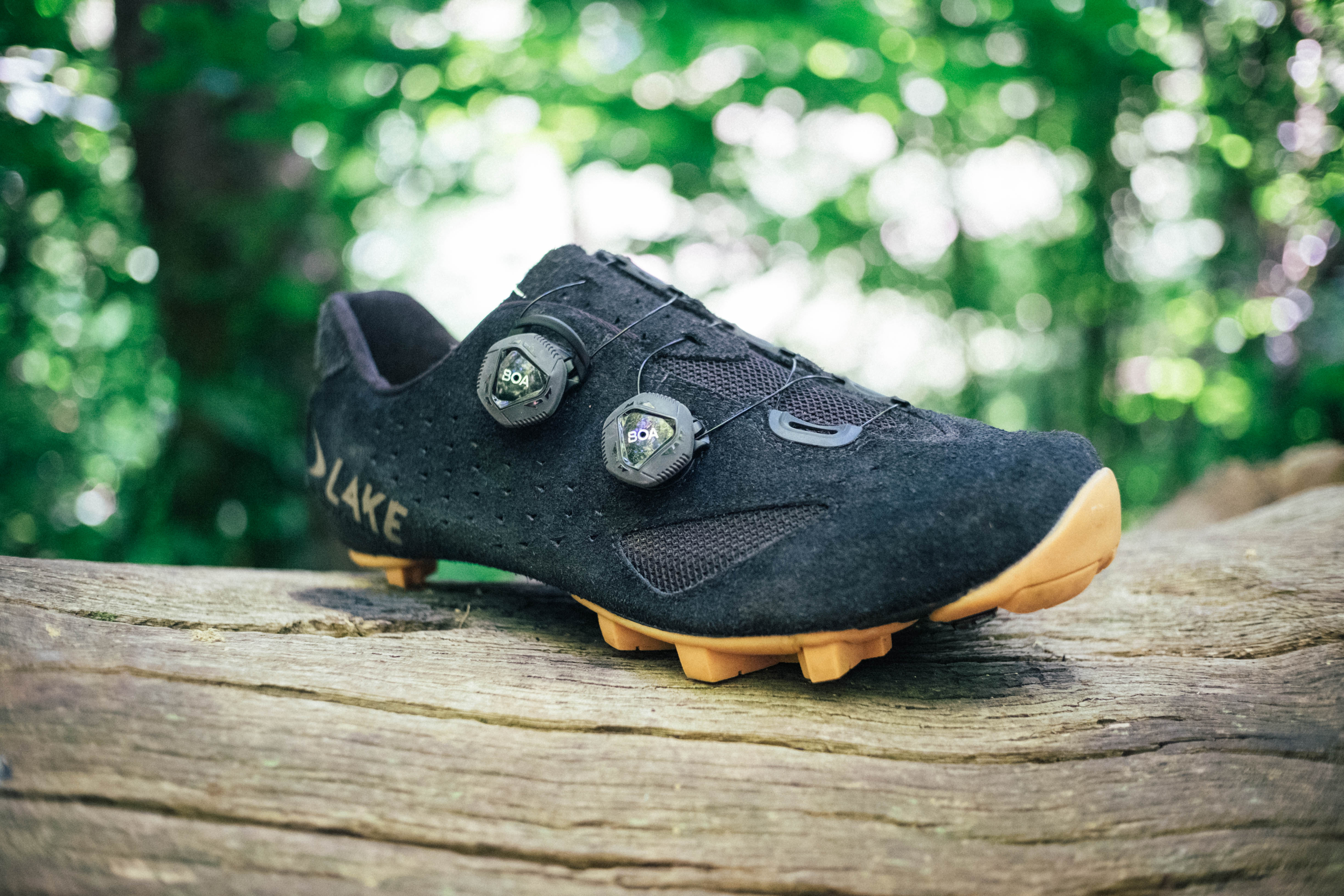
4. Lake MX238 Gravel
Specifications
Reasons to buy
Reasons to avoid
✅ You have wide feet: Lake shoes have a wide forefoot as standard and there's an even wider option available.
✅ You like a natural upper: The real suede will stretch to fit more than synthetics.
❌ You want to keep weight low: The natural suede upper makes for a heavier shoe.
❌ You want the best heel retention: I found my feet lifting in the wide heel cup and rubbing on its side.
If, like me, you have a wide forefoot and you are yet to try a shoe that truly allows your foot to achieve its full width unimpeded by the confines of the shoe then I urge you to try a pair of Lakes. I use the standard width of the MX238 Gravel, and they are wide enough, though they come in a wider version too, so for narrow-footed riders, you will likely find them cavernous, but if you're like me and blessed with flippers they may be transformative. Just to illustrate the difference in width, these are around 15mm wider than the Vento Ferox Carbons.
Comfort is the name of the game, being constructed in this case from a delightful, extremely supple black suede that certainly looks good against the gum outsole. Even if you do somehow find your forefoot coming up against the sides of the shoe the exterior is not only soft enough not to hem your foot in, but it'll also give with time, at least in the suede option; I cannot speak for the microfibre options I'm afraid.
The dual BOA closure allows for an adequate fit, but the older generation dials feel dated now compared to those in use on the Rapha Powerweave, S-Works Recon etc, especially at this price. While these aren't the same kind of shoe as the Bont Vaypor G, they do both share a very roomy toe box. It takes a bit of getting used to, having never really had it in other shoes to this extent before, and while I don't think it's as important as an appropriate width shoe it certainly makes for a more comfortable setup on longer rides.
If weight is an issue then these aren't the shoe for you, unless they're a perfect fit. Suede isn't a light material, and they're generously padded, making them the second most hefty on test, if you exclude the Quoc Chelsea.
My main issues with the MX238 Gravel come at the rear end of the shoe. The heel cup is wider than many, mirroring the fore of the shoe, resulting in (for me at least) not the best heel retention. Certainly not the worst on test by any means, and nothing to cause me concern for general riding at all, but noticeable against narrower options. The ankle cut-outs too were oddly shaped, with the low point situated very far rearward of my ankle bone protrusions. This resulted in the side of the ankle digging into my foot when pedalling out of the saddle. This will be alleviated to some degree if you're cycling with your toes particularly pointed, but that tends to be a sign that your saddle is too high too.
Custom fit
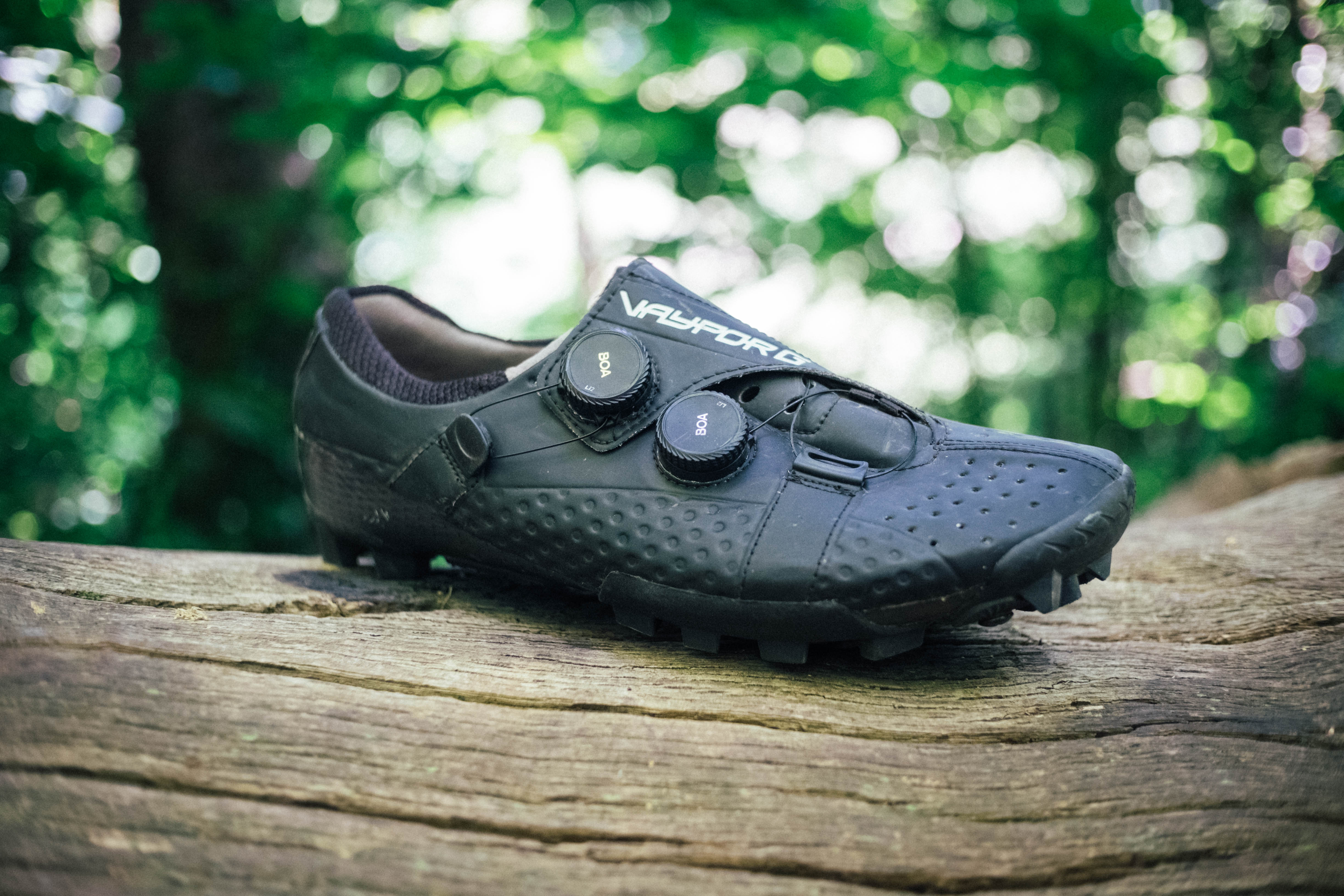
Specifications
Reasons to buy
Reasons to avoid
✅ You want plenty of width options: With four widths on offer, you should be able to find one that fits.
✅ You have odd-shaped feet: The Bont shoes can be heat-moulded to fit better.
❌ You want to walk comfortably: The bathtub sole makes for a very stiff shoe, so the Bonts are best if you don't walk much.
❌ You don't race: These are really race-only shoes.
Carbon-soled cycling shoes, whether gravel, road or MTB, are usually constructed around a flat carbon leaf sole. Bont, on the other hand, uses a 'bathtub' option, whereby the sole extends up the sides to encase the foot entirely in a carbon hull. This has the effect of making a shoe that is mind-bogglingly stiff; think about how a steel sheet is always going to be more floppy than a steel I-beam. They are so stiff I honestly cannot fathom walking in them, stiffer than any other shoe I have used by a noticeable margin. The experience is similar to wearing mountaineering boots with fully rigid soles designed to accept crampons.
Given the bathtub construction, the heat moulding process is paramount to make sure you avoid any pressure points. Twenty minutes in the oven at 70 degrees is enough to render the soles pliable, enough for a few millimetres of adjustment in any case. Bont does offer four different width options, and choosing the correct one is key because, try as you might with the butt end of a screwdriver, if your feet are too wide for the bathtub there is nowhere for them to go. No soft material, just hard, immovable carbon fibre.
Sadly I was just a hair too wide for the regular width so I didn't have the most comfortable experience. But I did tune the fit enough to learn that if you want a shoe that gives you the feeling of total power transfer then it's hard to find anything that touches the Vaypor G. Given the stiffness they are rather unforgiving over particularly rough ground, but as a race shoe they'd rival the S-Works option and even beat it I'd say if you can get the fit spot on.
The closure system makes for a comfy upper even if the sole is hard going, with a wide flap meaning no pressure points occur even when cranked up for an all-out effort. The toe box, too, is wide like that of the Lakes, so your little piggies can move around happily. As per the S-Works then, a race shoe only, not for walking, despite the appearance of the aggressively lugged outsole.
We've got a full Bont Vaypor G review already if you need a bit more info.
Best for commuting
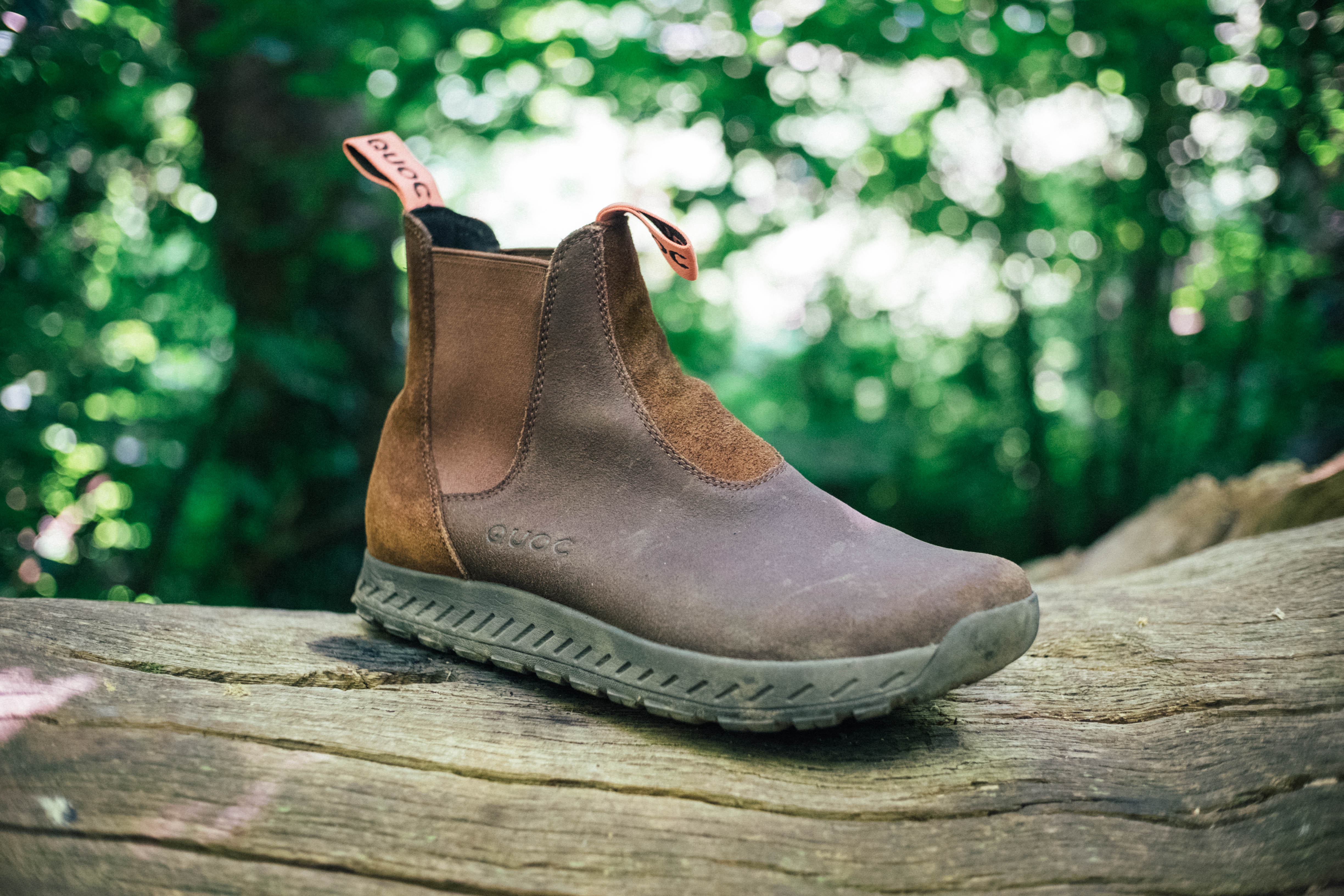
6. Quoc Chelsea Boots
Specifications
Reasons to buy
Reasons to avoid
✅ You want an all-day shoe for commuting: The Quocs look good in the office as well as on the bike.
✅ You want to keep your feet dry: The high ankle and waterproofing help to keep water out on wet commutes.
❌ You're gravel riding: The Quocs are more for commuting than for exploring.
❌ Your feet don't fit: The Quoc Chelseas are currently only available in limited sizes.
Many people opt for a gravel bike as a do-it-all wagon. Something that can handle road, gravel, and also commuting duties. Well, makes sense to include an option for those going to and from an office then, right?
I would choose the Quoc Chelsea, a Chelsea boot with an optional cleat recess in the sole, from Quoc would be my choice. For the summer, if you work somewhere distinctly modern then you could well get away with a pair of Adidas Velosambas, but for something that works on the bike year-round, and doesn't leave you falling foul of draconian dress codes, the Quoc Chelsea is hard to beat.
While the leather forefoot and suede rear aren't totally impervious to water ingress, it does a great deal better than any other shoe on this list when you fly through a puddle. The sole is stiffer than you're likely expecting, stiffer than some of the composite soled options above, so while it's better for walking in it's not nearly as comfortable as, say, an actual pair of normal Chelsea boots. The flip side of this is that they're surprisingly good for riding in, never floppy, and with surprisingly good heel retention. You can fit a filler block where the cleat recess is, but in my mind, at that point, you may as well get a set of Blundstones.
While reflective detailing is never a substitute for a set of the best bike lights while riding at night, adding reflectivity to shoes is a good place to do it, as the motion is unnatural to the human eye at night and stands out. The series of dots on the rear adds a little bit of extra safety if you're riding to and from work after dark.
You may notice I have a size smaller here than the other Quoc options, but after testing these are actually a smidge too small, so stick to the sizing for the other pairs if you're in two minds, that being your normal size.
Also tested
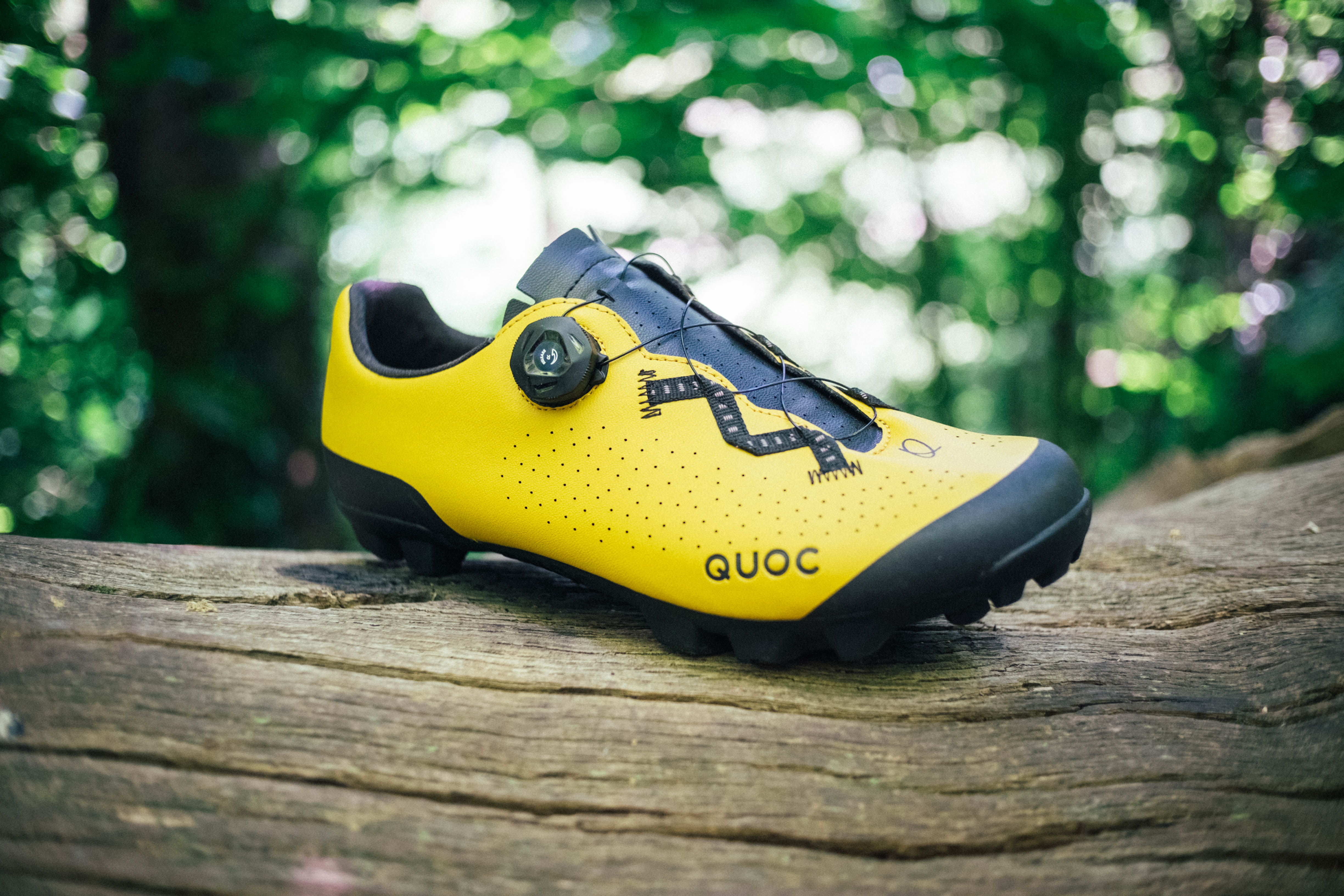
7. Quoc Escape
Specifications
Reasons to buy
Reasons to avoid
✅ You want an affordable dial closed shoe: The Quocs offer good value for a dial closed shoe.
✅ You like yellow: I loved the looks and the deep yellow colour, although it's hard to keep clean.
❌ You have wider feet: There's only one width on offer and it's not as wide as the Lakes.
❌ You want more insulation for winter use: There's not as much padding as in the Giro Privateers so your feet will be colder.
In all honesty, I was torn for a time as to whether to award these the overall. They fill much the same function as the Giro Privateers, at a similar price point. The Privateers however do a better job of trickle-down performance. If you're not after laces though and want a great pair of gravel shoes with a dial closure then the Escapes are hard to beat, especially as a first option.
The single dial, a non-BOA option, is the same as the two found on the more premium Gran Tourer CX model. As per the road model of the same shoe I've also had on test the closure is perhaps the best of any single-dial shoe I've tried. Often one dial will mean the upper foot fits but the forefoot is a bit floppy, but that's not the case here. The dial itself doesn't feel as good as a BOA-branded one, even the lower-end dials, but it works nonetheless.
The fit is similar to the Privateer; relatively narrow, but with a soft enough exterior to allow the foot to expand over the edge of the sole if they aren't optimal. Shoes at this price point don't come in multiple widths sadly. They are noticeably less padded than the Privateers too; less comfy over properly rough terrain and a little less insulated for winter use, but on the flipside they feel a little more connected.
Heel retention was also excellent, though the heel lining annoyingly doesn't extend far enough around the entry to the shoe. This means there's a transition between padded and unpadded that sits just forward of the ankle and did provide a bit of irritation. Never painful, just noticeable when zoning out, but something that could easily be fixed by moving the transition forward of the tongue.
Aesthetics matter too, and these are a lovely-looking pair of shoes, especially in the lovely deep yellow. It doesn't affect performance, but it makes me want to use them more than many others.
I also tested the new Gran Tourer XC from Quoc, but you'll notice it is conspicuously absent from the guide. I couldn't notice any realistic improvements, and I actually found them less of a joy to wear. The ankle cup was stiffer, but with no real improvement in heel retention, and as the dials aren't as accurate as BOA options I found having two meant I genuinely couldn't get as good a fit compared to that which I could achieve with the single dial Escape, I think because, spread out over the whole shoe, the reduced dial accuracy is negated against a pair of dials only tweaking the upper/forefoot individually. The Gran Tourers are also heavier, with the same outsole, and a midsole that feels no stiffer. The only improvement was a slight reduction in the rubbing issue from the heel pad, though it did still occur. Save the £90 difference and spend it on something else.
Likewise, I also tested the Sidi Dust; a single dial, composite soled option. It was more flexible and didn't close as well, with a dial that was more of a pain to use. The RRP is higher, and while you can pick up a pair on sale for a similar price to the Escape, the only reason to do so, in my opinion, would be if you have extremely narrow feet, or you just want to wear Sidis because of the brand name or aesthetics.
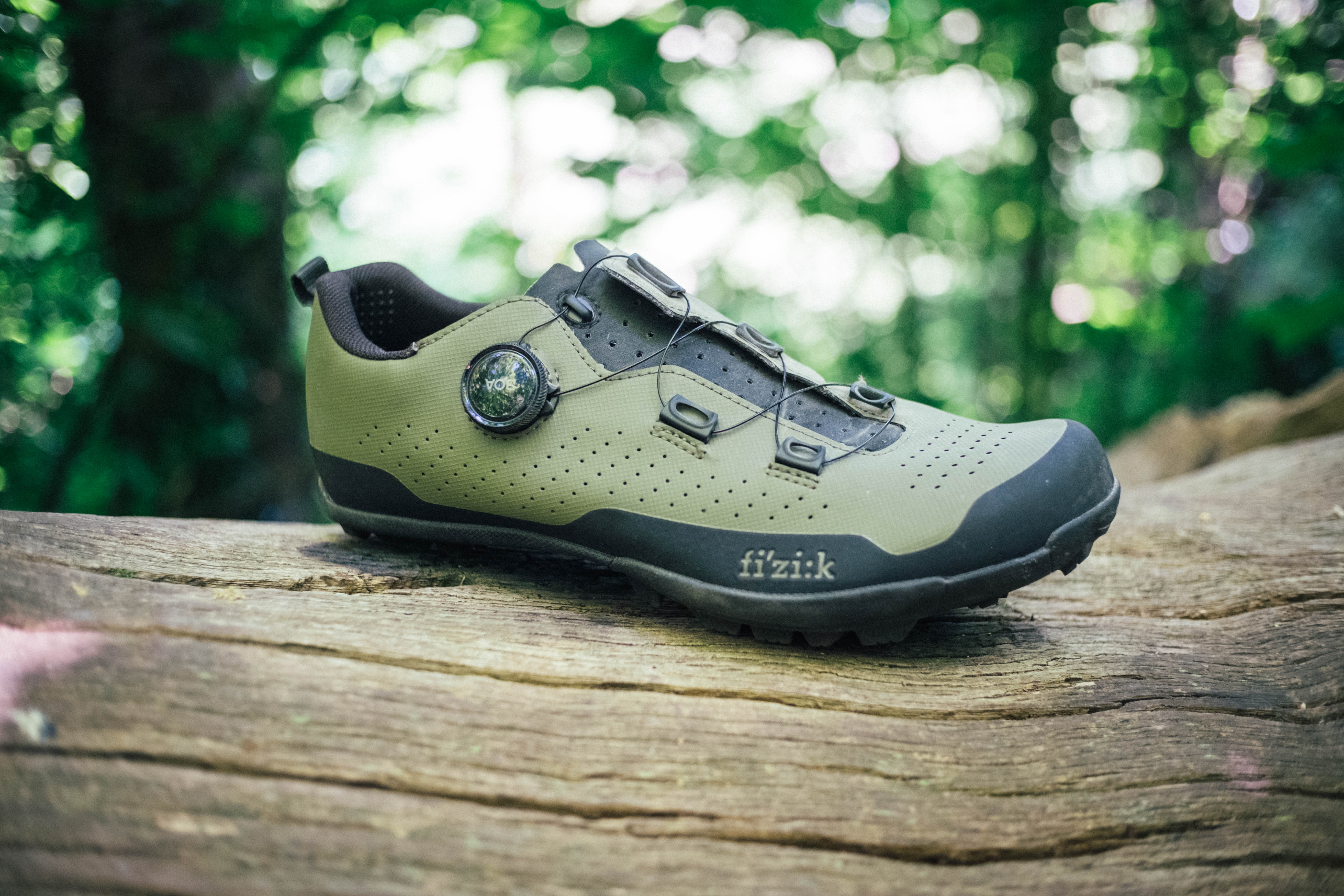
8. Fizik Terra Atlas
Specifications
Reasons to buy
Reasons to avoid
✅ You're looking for plenty of grip: Fizik's sole has deep cleats that cut into mud well.
✅ You want a sturdy shoe: The Terra Atlas feel robust and has added reinforcement on the sides of the uppers.
❌ Your feet are on the wide side: The Terra Atlas shoes are quite narrow.
❌ You want lower weight: These shoes are quite heavy and more akin to MTB shoes than road shoes.
Gravel shoes, on the whole, take their design language from road shoes. The Fizik Terra Atlas to me seems like it's come more from an MTB standpoint. It's bulkier than other Fizik options, and though it's wider for sure than the Vento Ferox Carbon (I can actually get my feet in these), it's still narrow. There's a clear focus on 'adventure riding', with a fully rubberised sole heel to toe, substantial cleats, and greater reinforcements around the lower of the upper fabric too.
The single dial does an admirable job of keeping the foot retained across the whole length, on par with the Quoc Escape, but here at least there is a BOA-branded dial closure. It's still a lower-end model, so if you want to release the tension you do have to pop it open and then start from scratch, but in my opinion, that's less of a drawback with single-dial shoes as at least you've only got the one dial to fiddle with.
Heel retention is decent, and while the little plastic dots are well-intentioned I found them more of an irritant than any help to actually keeping my heel down. The same rings true for any heel texture; no grippy materials can replace a good fit unless your socks are actually glued to your foot too.
Despite not fitting me perfectly they did feel like a very supportive gravel shoe. Sturdy, well made, padded enough to feel like you're protected, but not enough to make them feel wallowy. Not a race shoe, definitely more attuned to those of you who feel MTB curious. To be honest you could probably use these for MTB quite happily too, if you need a do-it-all option.
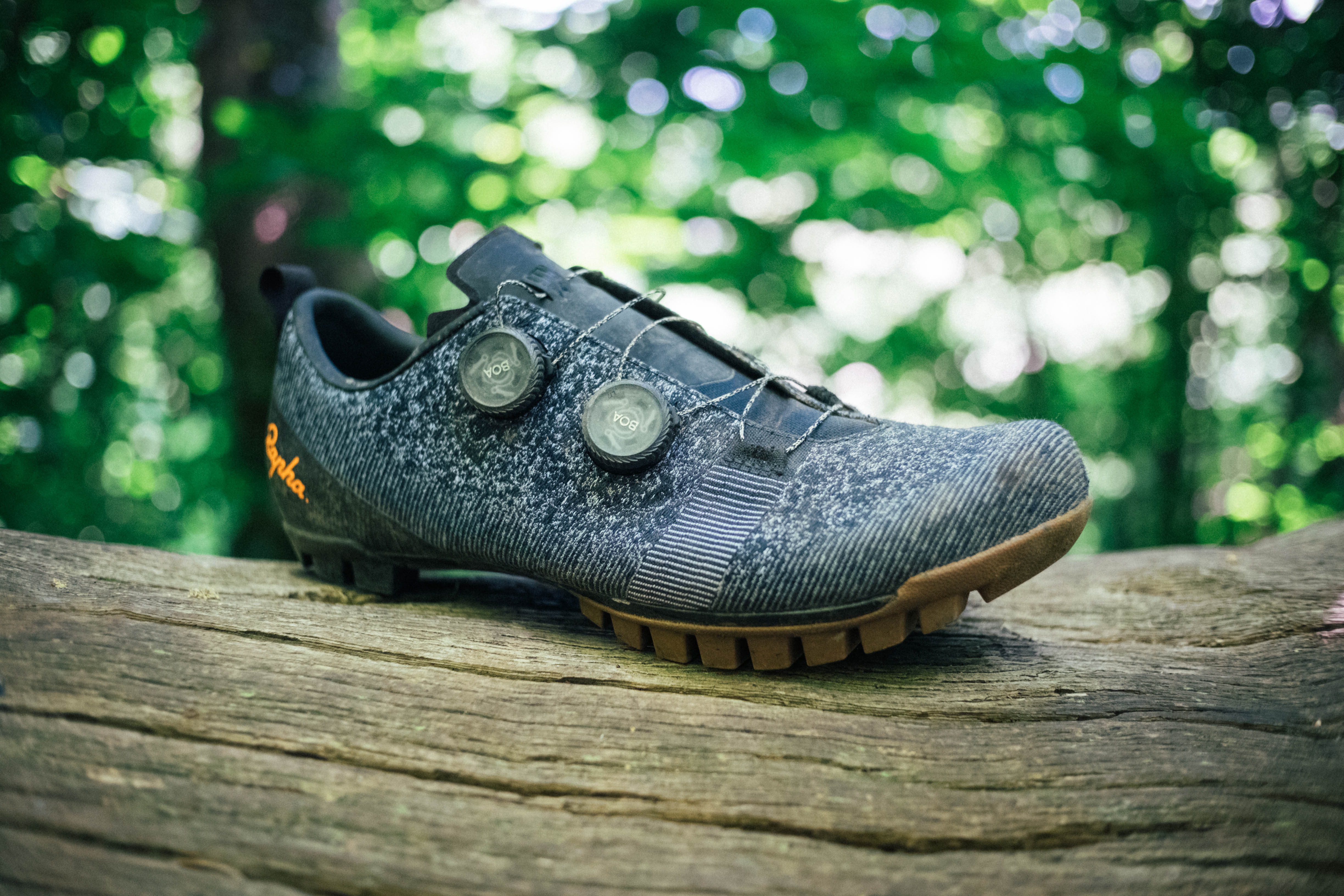
9. Rapha Explore Powerweave
Specifications
Reasons to buy
Reasons to avoid
✅ You want a stiff sole: Rapha's carbon sole is as stiff as you're ever likely to want in a gravel shoe, but still easy to walk in.
✅ You value the best foot retention: I was impressed with how well the twin BOA dials held my feet in place.
❌ You find cleaning shoes a pain: The fabric uppers are hard to keep looking their best.
❌ You have a broader toe profile: The Raphas have quite a pointed toe which may be uncomfortable.
The fit of the Rapha Powerweave is very similar to that of the S-Works Recon, especially in the heel. The twin BOA dials do a great job of properly ensconcing the foot, particularly at the upper portion, and the heel is a similarly unpadded unit with a retention ridge at the upper reach. The ankle is higher, and given the stiffness of the heel cup and the lack of padding this may be uncomfortable for some, but I never found it an issue even over full days out.
The toe box is very pointed though, much like the Vento Ferox Carbons, so if you have a square toe profile you may find like me that a couple of your little piggies get distracted from having their roast beef and instead just press on the toe box.
The carbon sole is as stiff as you'd ever really want for a gravel shoe, even for racing, but the real party piece for me is the outsole. Most shoes in this list, whether they accept toe spikes or not, feature a couple of serrated or smooth blocks on either side of the cleat (so as to effectively recess it), and some toe lugs. For the Explore Powerweave, Rapha has added an unbroken tread from the midfoot all the way to the toe, meaning there's no clunk halfway through each stride as you transition from cleat lug to toe lug. It's a minor detail but it's certainly effective, and in combo with the race fit these are what I'd take if I were ever to combine high-tempo riding with a lot of walking; I'm thinking bike-packing races, primarily.
They're better to walk in than the Recon ADV, even without a more flexible toe, but definitely a more race-oriented shoe by the fit and profile. The Powerweave outer fabric also accommodates my wider forefoot adequately, but good grief are they hard to clean. With something like the Empire VR90 you need a wet cloth and you're done, but here thanks to the textured nature of the outer, you're better off leaving them to dry and going at them with a stiff brush.
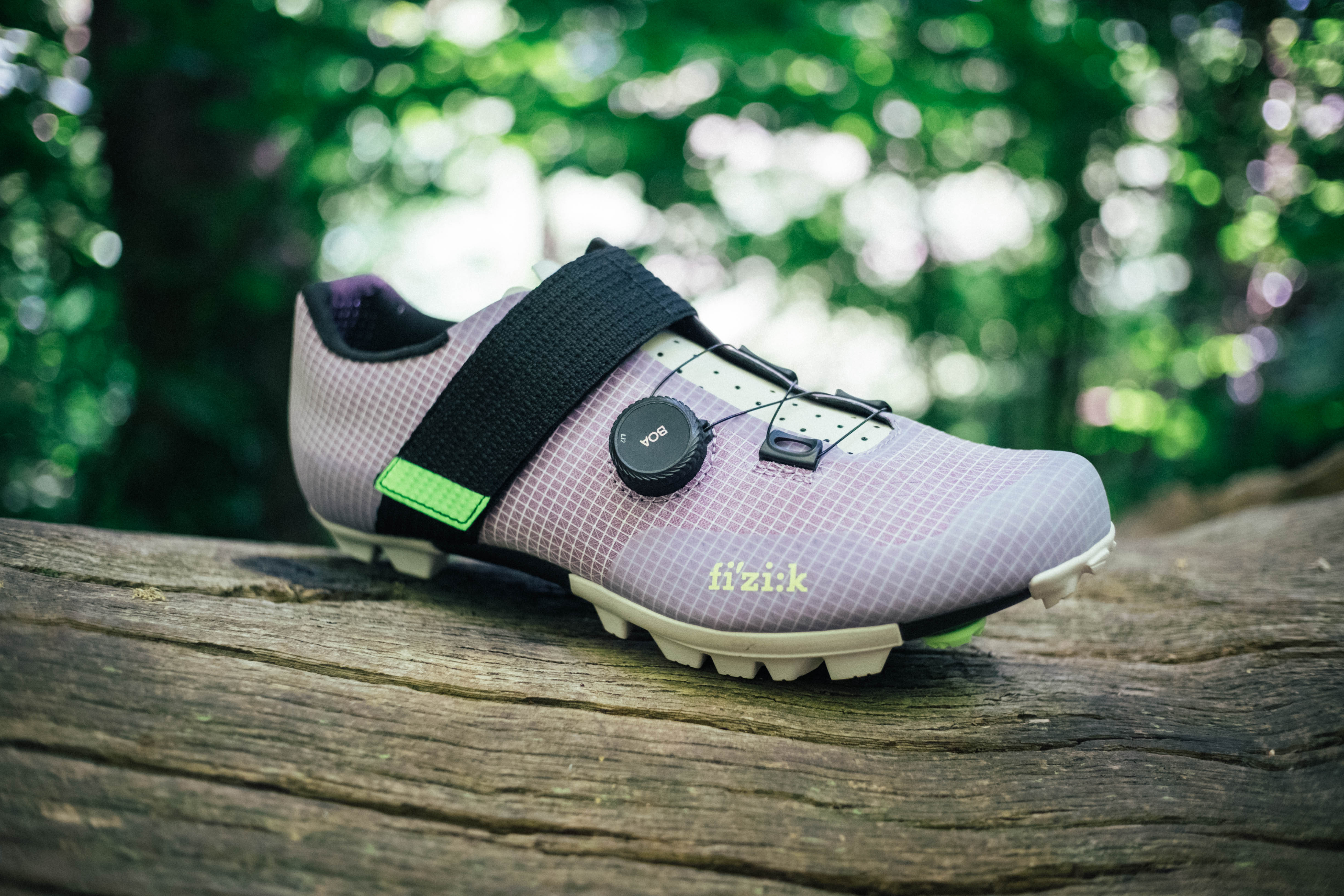
Specifications
Reasons to buy
Reasons to avoid
✅ You want to avoid pressure points on the foot: The wide Powerstrap distributes pressure over the upper foot well.
✅ You want plenty of cleat adjustment: Fizik's sole is good for faster-paced riding and offers long cleat slots.
❌ You have wider feet: These shoes were too narrow for my feet.
❌ You want more toe protection: The toe area is not well protected from scuffing and bashes.
Full disclosure time: I haven't tested these myself. Every other shoe I have ridden in order to compare and contrast, but these Fiziks were simply too narrow for my feet. Fortunately, though my colleague Josh Ross has already given us a full review of them, and having gone through his guide to the best road shoes recently we have very similar opinions on footwear, even if our feet are very different, so I will summarise from his work in this case:
As you've gathered already, the fit is narrow. The one Powerstrap up top is wide and comfortable, and strong enough to retain the foot even at full power. It's quick to adjust on the fly, thanks to its size, but rarely is the upper foot the bit that needs adjustment mid-ride. This is why it's a Velcro closure that I can actually get on board with for gravel use, as you're unlikely to actually expose the inner hooks and loops to grime that frequently.
At the forefoot, the single BOA dial, a dual-direction model, takes care of smaller adjustments with ease, for the part of your foot that actually swells over the course of the day.
The stiffness is spot on for fast-paced riding and racing. Stiff enough to be optimal, not so stiff as to be uncomfortable when you're taking it easy. The other good thing about the midsole is the cleat plate. The slots are extremely long, allowing tonnes of fore/aft adjustment, meaning if you're into slamming your cleats to the midfoot then you're in luck.
As for downsides... well that extremely pretty exterior that does kind of put me in mind of early 90's graphic design isn't hugely breathable, and while the toe isn't flimsy, it doesn't have the same protection from toe rub as the other models, so if you do slam your cleats back just bear that in mind.
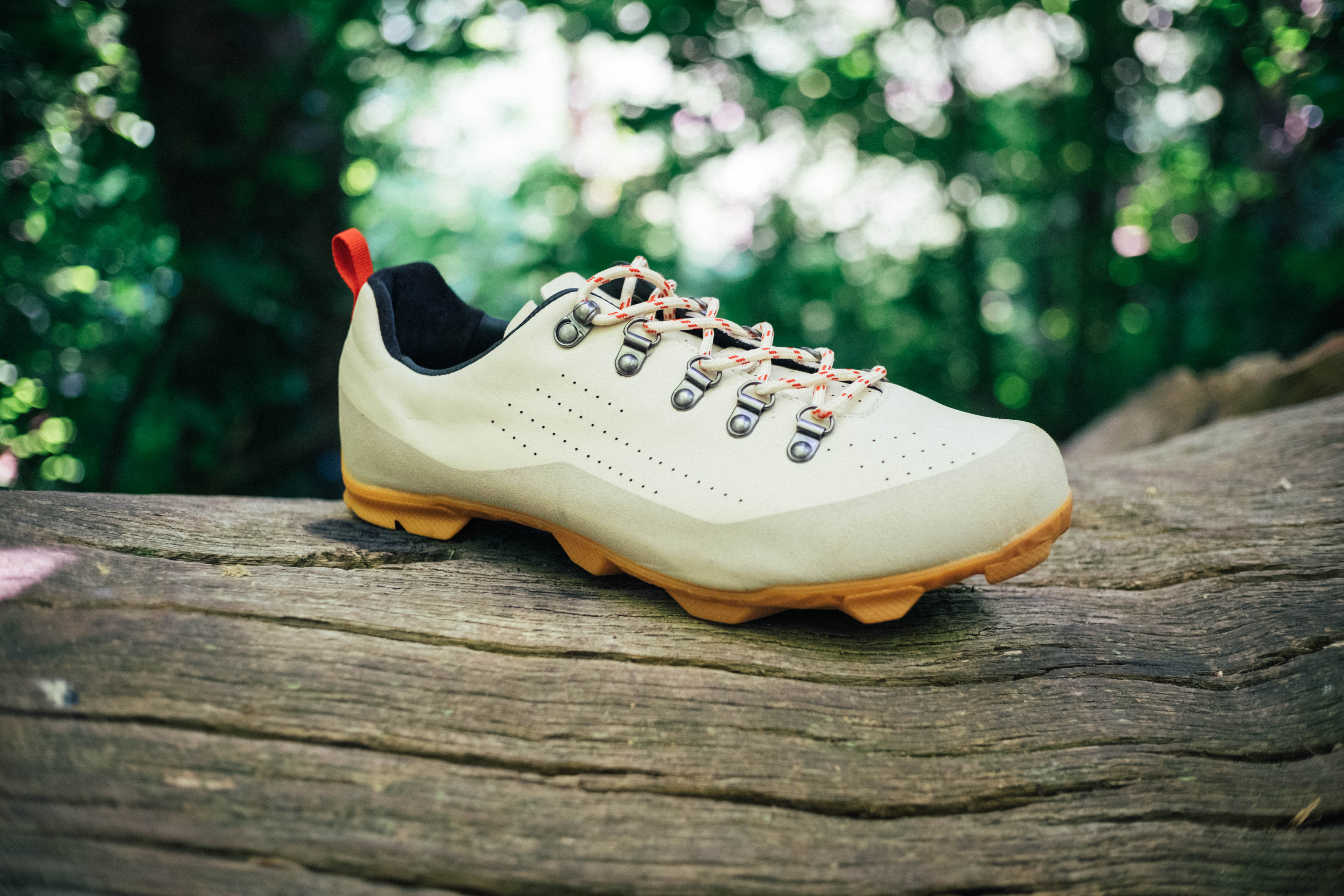
11. Café du Cycliste Outlands
Specifications
Reasons to buy
Reasons to avoid
✅ You want classy looks: These shoes look beautiful and are well-made.
✅ You like the quality build: The Caffs have a luxurious feel and have so far worn well.
❌ You want better foot retention: My heels slipped in these shoes and the laces were also prone to loosen.
❌ You want lower weight: The traditional materials make for weighty shoes.
If you've been riding gravel for even a short term you'll probably have heard the phrase "The Spirit of Gravel". This nebulous beast means many things to almost as many people. To me it means "Wearing sexy gear while messing about in the sunshine", and no shoe better encapsulates that to me than the Café du Cycliste Outlands.
I'd have loved to be in the meeting where someone proposed styling a performance cycling shoe after a vintage set of hiking boots; I presume it occurred after a boozy lunch with lots of rich cheeses and dried meats.
These aren't the best gravel shoes for anything really. The heel retention isn't great, despite the best efforts of the cat's tongue fabric on the inside. The laces too sometimes slip when you're trying to tie them up and slip in the eyelets, so getting the perfect fit is hard, and making a shoe with leather, metal eyelets and a full gum rubber outsole makes them the heaviest 'proper' gravel shoe of the bunch.
I don't care though, because they're beautiful. They smell great too, for now, and are ageing well. They're an expensive affectation, but they make me feel a million dollars when I do wear them. For general riding, they're perfectly adequate from a performance standpoint, and I'm also a big proponent of the fact that looking good makes you feel better and ride better.
They are also extremely well made and feel luxurious, more so than the more expensive shoes on the list. The full gum outsole is also second only to the Explore Powerweave in terms of ease of walking, only detracted from by the slight heel lift with each step.
These are a shoe to buy if I'm being totally honest, just because you want them, and that's fine. There's space for that alongside more pragmatic choices, but please still bear considerations such as fit in mind as I go into later in the FAQ's.
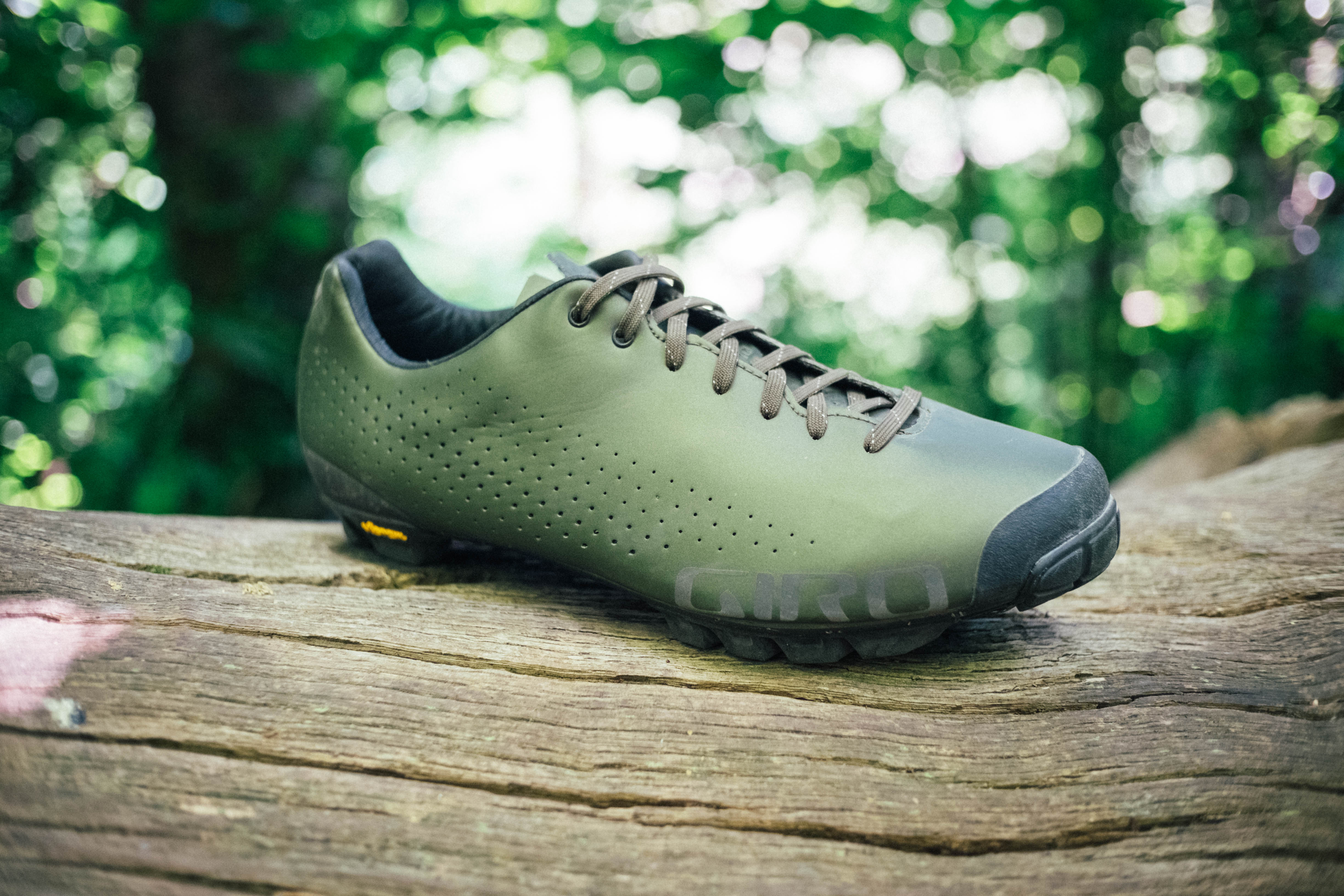
12. Giro Empire VR90
Specifications
Reasons to buy
Reasons to avoid
✅ You want stiff, comfortable lace-up gravel shoes: The Empires tick all the performance gravel shoe boxes.
✅ You want to tune the fit: The shoes are supplied with customisable arch support in the insoles.
❌ You want to keep the cost down: I reckon the Empires don't justify the extra expense over the Giro Privateers.
❌ You want a contemporary look: The appearance of the Empires now feels a little dated.
Take a Privateer, slim it down a bit, add an Easton carbon midsole and a Vibram outsole and you have the Empire VR90, the gravel version of the Empire SLX road shoe, which my colleague rated as the best road shoe on the market (something I agree with him on).
These are a better shoe than the Privateer, so why not rate these the best overall? In my opinion, the improvements over the Privateer aren't enough to warrant spending the extra hundred pounds unless you really want the performance gains, and against the backdrop of the development of the Empire SLX, the VR90 feels somewhat dated. Also, the Empire VR90 sit alongside other high-performance options, where they stand out less.
That being said, if like me you love the fit on offer from lace-up shoes, and want something stiff, comfortable, durable, and easy to clean then these are the shoes for you. The carbon sole does an effective job of keeping the feet planted but isn't so hellishly stiff that you can't walk about in them.
Gone is the double reinforced heel of the Privateer, resulting in a sleeker, more aesthetically pleasing exterior, but still with that all-season impervious nature. The outer sole is essentially the same as the Privateer, but with Vibram branding, which doesn't really add much in my opinion except some number to the price.
I have delicate high arches, so I use aftermarket insoles, but these do come with a customisable set of insoles to tune the fit too, which certainly helps, but I'm yet to find a shoe with sufficient insole support out of the box.
Of all the shoes these are what I'll probably continue to ride following the culmination of this group test because they fit me very well and aren't so fancy that I'd worry about trashing them. While they used to be a serious contender for the best race shoe, they now feel like a performance generalist. I'd love to see an SLX version in time, like Specialized has done with the Torch/Recon, to add a bit more competition at the top end.
How to choose the best gravel shoes for you
As with any purchase, the best way to get what's perfect for you is to start by being honest about your use case. If you don't race, you don't need race shoes, for example. It's so easy to fall into the "ah but what if one day I..." trap, but I implore you to really define what you need now before you home in on what you may one day need down the line.
Once you're done with the function, the fit is the next key thing to consider (yes, more than closure, sole material or even aesthetics I'm afraid). Footwear is a huge part of one of the main contact points with your bike, and getting the fit wrong can have knock-on implications up the biomechanical chain.
More than choosing the perfect gravel bike saddle or the best cargo bib shorts, footwear can play mischief with your tendons rather than your soft tissue. If you don't know how wide your feet are then do some research; I assumed I had the dainty narrow feet of a ballerina, but after getting a bike fit I found out I actually have troll feet, so you may be surprised.
Then you can think about closure and aesthetics. These are more down to personal preference and don't have any real drastic impacts so you can pick your poison as you please.
Can I wear mountain bike shoes for gravel riding?
Of course you can, but mountain bike shoes are generally more overbuilt and have soles suited to the demands of the chosen discipline. Cross-country, or XC, shoes will be the closest analogue to gravel shoes, and before gravel-specific footwear existed this was the next best thing. However on the whole you don't need toe spikes for gravel riding, and while many gravel shoes have ports to fit them they're much more useful in cyclocross.
At the other end of the spectrum, just because you can clip into your gravel bike with a set of downhill shoes doesn't mean you should. You'll rub your cranks, your feet will overheat, and you'll probably get blisters.
Can I wear road shoes for gravel riding?
You can, but you shouldn't. At the very competitive end of gravel races it is something we see as they do offer a better pedalling platform thanks to the larger cleat, but this only really works though as the racers are unlikely to put a foot down over the course of the race, and also probably get free cleats. In wet and muddy races it's rarely seen at all, as road pedals are much more prone to clogging.
In short, if you're going to ride off-road regularly then get some off-road shoes. I took my road bike on an excursion down a bridleway once and my Look Keo Blade pedals got so clogged that I blew the carbon spring out of one of them trying to get my cleat to clip in. Learn from my mistakes.
Do I need toe spikes for gravel riding?
No, not unless you really want them. Toe spikes are primarily added to shoes for cyclocross racing and CX MTB racing where the chances of having to run up a steep, muddy incline are much higher. The toe spikes dig in and stop you from failing to make any forward progress.
Gravel riding generally doesn't involve fast, crazy steep run-ups, but if you also race 'cross then having the option to fit them when necessary will be hugely beneficial.
My top tip is to make sure you remove them for general use too; throwing a leg over your top tube and accidentally scoring it with a sharp stud is a mistake you only make once.
Are laces better than dials?
There isn't a 'better', they're just different. Each has advantages and disadvantages. Laces are infinitely adjustable, superlight, and durable, but are fiddly (especially in the muck), and cannot be adjusted quickly on the fly. Dials on the other hand, spearheaded by BOA, offer easy adjustment to the fit of your shoes while you're riding.
You'll notice a conspicuous absence of Velcro in this guide, save for the one Powerstrap seen on the Fizik Vento Carbon. Velcro has a finite service life at the best of times, and this is accelerated when you throw mud and dust into the mix, so if you can avoid it then steer clear, especially if it's the main closure system on the shoe.
Should gravel shoes be stiff?
This depends on what sort of gravel riding you're doing. For racing then you do probably want a stiff shoe, as it's claimed to offer better power transfer. Given composite soles are also light it doesn't necessarily offer a great weight saving though, and if you're going to walk around in your gravel shoes a lot then a carbon sole can actually be a downside as it makes the shoes uncomfortable and ungainly to clip-clop about in compared to the more flexible feel of a composite sole.
How should my gravel bike shoes fit?
We are conditioned in cycling to want everything to be skintight, but your feet need room to spread out to their full width under load to best transfer power, so don't go forcing yourself into a too-narrow shoe just because you want it to fit. You aren't the ugly step-sister; you are Cinderella and you deserve a gravel-specific glass slipper of your own.
Ideally, you want enough room for your forefoot to spread out, with a heel narrow enough to prevent it from lifting on the upstroke. In my experience, the former is more important than the latter, though if you have stiff shoes and are walking a lot then heel retention does become more important, as the heel wants to lift away from the shoe each stride if the sole doesn't flex.
In general Italian shoes tend to be the most narrow, so that's Fizik from this list but also Sidi. Giro does also come up narrow, but the outer material is often softer, allowing more leeway in the fit.
If you do have wide feet then some brands offer wide fits or are wider out of the box anyway. Bont shoes come in four widths, and Lake are both wide as standard and come in a few even wider options.
I usually wear a size 44, so from the "weight" stat box for each shoe you can also see whether I was true to size, or had to go up or down.
How we test
Primarily by riding in all of them, you'd be unsurprised to hear. I spend a lot of time riding on gravel anyway, but heading out with several shoes isn't unusual, to be able to try back-to-back options to see how they stack up. I also tend to get distracted and head down interesting trails, usually ending up with me walking back up again when I get to a dead end, so how they grip off the bike is also at the forefront of my mind.
As for walking about, I get about by bike in town and to the office, so as much as anything else these shoes became my daily options for some time too.
Finally, given the UK climate, I've been truly #Blessed to have had my fair share of mud as well as beautiful fast dirt to see how they handle getting filthy and how they clean up afterwards.
Get The Leadout Newsletter
The latest race content, interviews, features, reviews and expert buying guides, direct to your inbox!

Will joined the Cyclingnews team as a reviews writer in 2022, having previously written for Cyclist, BikeRadar and Advntr. He’s tried his hand at most cycling disciplines, from the standard mix of road, gravel, and mountain bike, to the more unusual like bike polo and tracklocross. He’s made his own bike frames, covered tech news from the biggest races on the planet, and published countless premium galleries thanks to his excellent photographic eye. Also, given he doesn’t ever ride indoors he’s become a real expert on foul-weather riding gear. His collection of bikes is a real smorgasbord, with everything from vintage-style steel tourers through to superlight flat bar hill climb machines.